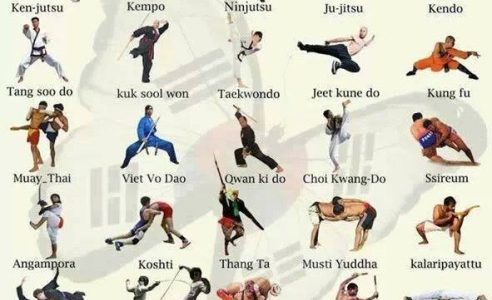Standard Martial Arts And Modern Fight Sports: A Comprehensive Summary Of Their Unique Differences
Standard Martial Arts And Modern Fight Sports: A Comprehensive Summary Of Their Unique Differences
Blog Article
Authored By-Keith Finnegan
When you consider martial arts, do you lean a lot more towards the standard techniques or the modern-day battle sports? Each course supplies distinct benefits and experiences, formed by their viewpoints and training approaches. Traditional martial arts stress personal growth and technique, while modern-day fight sporting activities focus on competitors and performance. Comprehending these distinctions can lead you in picking the ideal approach for your journey. But how do these differences manifest in training and philosophy?
The Philosophy and History Behind Standard Martial arts
While many individuals connect martial arts with physical fight, the philosophy and background behind conventional martial arts run much deeper. You'll discover that these self-controls stress personal growth, discipline, and regard.
Stemming from ancient practices, traditional martial arts were often established for Self-Defense and spiritual advancement. They embody concepts such as equilibrium, harmony, and self-control, directing experts past mere combating abilities.
As you train, you'll not only learn techniques but likewise gain understandings into the culture and worths that shaped these arts. The rituals and customs, usually given via generations, promote a feeling of neighborhood and belonging.
The Affordable Nature of Modern Battle Sports
Modern fight sporting activities have actually transformed the landscape of martial arts into a very affordable sector, where athletes take on in an examination of skill, technique, and endurance.
You'll see that competitions are frequently organized with strict rules and regulations, making certain fair game and safety and security. These occasions bring in big audiences, sustaining the excitement and intensity of competitions.
Professional athletes train carefully, not just for physical expertise however likewise for psychological strength, understanding that every detail counts in the ring. how much is karate kid master the martial arts worth throughout competitions is apparent, as boxers push their restrictions to claim success.
Followers value the athleticism and artistry involved, making modern battle sports a thrilling phenomenon that remains to advance and astound lovers around the world.
Training Methods and Techniques: A Relative Evaluation
The affordable ambience of modern-day combat sports needs cutting-edge training techniques that vary substantially from standard martial arts.
In modern-day training, you'll focus on details strategies, sparring, and conditioning, commonly making use of drills that imitate genuine fight situations. You'll see a focus on measurable performance and frequent competition to evaluate your abilities.
On the other hand, traditional martial arts prioritize forms, katas, and thoughtful teachings, typically stressing discipline and regard over competition.
Training is usually much less extreme and might involve repeated practice as opposed to real-time sparring.
While both techniques construct ability and fitness, contemporary fight sports supply a more vibrant and adaptable training setting, preparing you for prompt difficulties in the ring or cage.
Choose the course that straightens with your objectives and interests.
Final thought
In selecting in between conventional martial arts and modern combat sports, it truly boils down to what you value many. If https://blockclubchicago.org/2022/06/24/jiu-jitsu-black-belt-uses-martial-arts-skills-to-subdue-man-who-punched-an-uptown-7-eleven-employee/ seeking personal growth, self-control, and a sense of area, typical arts may be your ideal fit. However if you prosper on competition and real-time obstacles, contemporary combat sporting activities could be the way to go. Eventually, read more use one-of-a-kind benefits, so it's all about aligning your training with your personal objectives and rate of interests.
